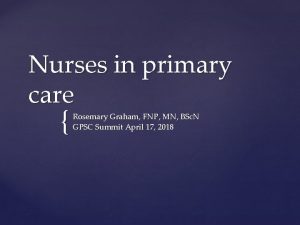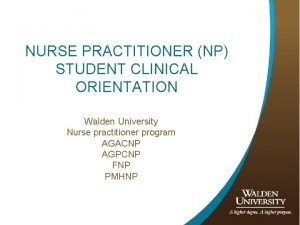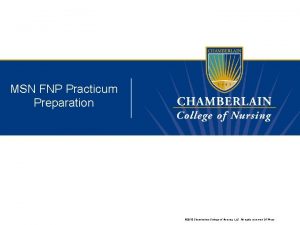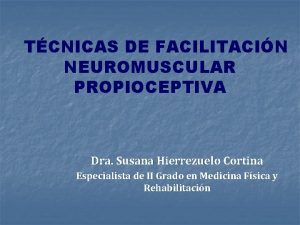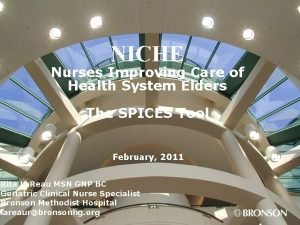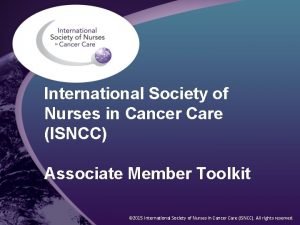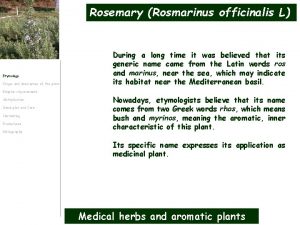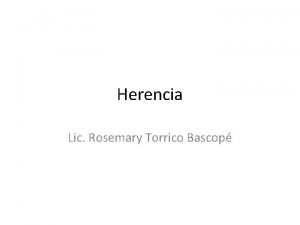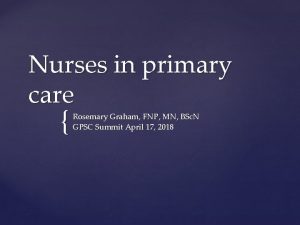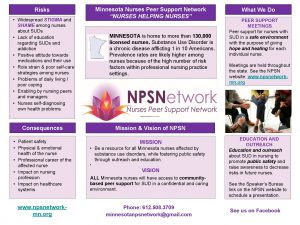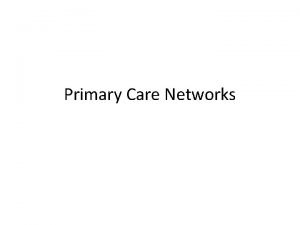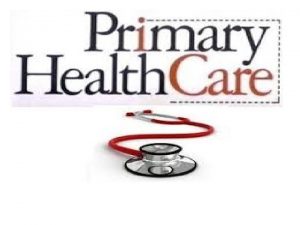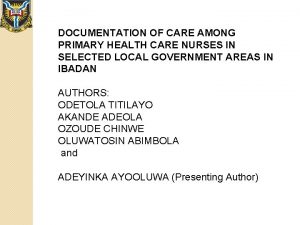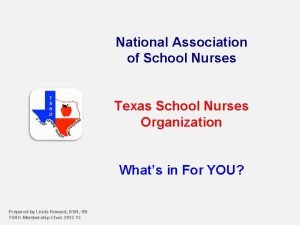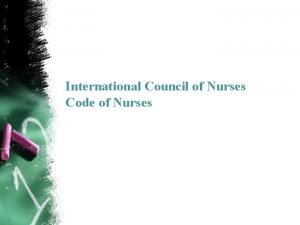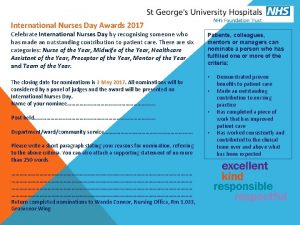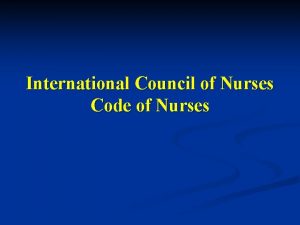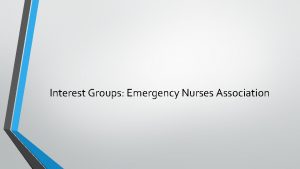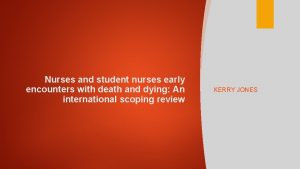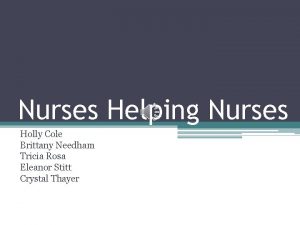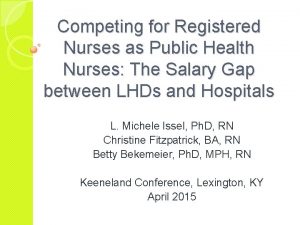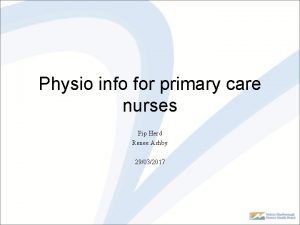Nurses in primary care Rosemary Graham FNP MN


















- Slides: 18

Nurses in primary care { Rosemary Graham, FNP, MN, BSc. N GPSC Summit April 17, 2018

• • • Grant/Research Support: NO Speaker’s Bureau: NO Consultant: CRNBC NP accreditation assessment & OSCE examiner Major Shareholder: NO Other: I work for Island Health Authority Disclosures

{ “Money would be better spent in maintaining health in communities rather than building hospitals to cure. ” Florence Nightingale

What is a nurse?

A person trained to provide specialized care and assistance through relationship, education and therapeutic intervention. Supports individuals to the extent that it increases their capacity for health and feeling of wellness. Can work independently or collaboratively. What is a nurse?

Oversight and professional regulation by CRNBC, CLPNBC LPNs, RPNs and NPs are all regulated health professionals. Each category of nursing builds on foundational nursing knowledge and skills Nursing activities depend on location, scope, training &/or privileging and competence. Work independently or collaboratively on teams Nurses in BC

Health care for the promotion, maintenance and restoration of health. Prevention, treatment and palliation of illness and injury, primarily by : � Assessing health status. � Planning, implementing and evaluating interventions. � Coordinating health services. MAID Restricted activities Health Professions Act, 2016 Nurses in BC

Licensed professional nurses carry professional liability protection (PLP) for negligence in the provision of nursing services for at least $1 million per claim. Nurse practitioners are required to have coverage of at least $5 million per claim. The Canadian Nurses Protective Society (CNPS) provides professional liability protection up to a $10 million limit per year per RN or NP. CMPA advice to NPs. CMPA/CNPS joint statement. Liability

“The courts have stated that physicians working in the context of collaborative practice are not required to check the work of other independent healthcare professionals, such as nurse practitioners, who are providing care within their scope of practice and, generally speaking, each healthcare professional is responsible for the care provided. ” CMPA 2014 Liability

LPNs have two year diploma education in nursing that covers foundational nursing knowledge. LPNs care for patients at all life stages and provide care to patients with a focus on stable or predictable states of health. With additional education and experience some LPNs may be able to care for patients who have more complex care needs.

LPN Case finding , handover, outreach Develop health plan with pt & team Health assessment, screening , promotion Vital signs Medication updates Procedures within scope – labs, dressings, some immunizations & injections etc Evaluate pt response/effectiveness of interventions Update plans

Can work in varied settings and with any type of patient, and can care for clients with complex needs in unpredictable situations. RNs can perform assessments, provide a nursing diagnosis, conduct physical examinations, screening, healthy lifestyle support, education and chronic disease management with a goal of improving health outcomes and facilitating access to services. RNs work with patients individually or with their teams to develop plans of care RN

Case finding and case management & coordination Triage RN only visits Initiate labs for screening or monitoring of disease Treatment, dressings and procedures Medication dispensing or Rx within scope Standing orders Health monitoring, education & coaching RN co- visits RN Medication review Health maintenance review Telehealth

NPs have graduate or post graduate nursing education. (Masters or doctorate) with autonomous scope Clinical focus Assess, treat and educate patients & plan ongoing care and surveillance. ORDER a wide range of diagnostic tests (e. g. X-rays, lab tests, ultrasounds, MRIs). DIAGNOSE and treat a disease, illness or condition. REFER to specialists. PRESCRIBE Schedule I, IA and II drugs. Leadership Research NP

MRP & collaborative partner in care Med reconciliation & Rx initiation or renewal Health and illness screening, assessment & monitoring and treatment within scope Ordering investigation -labs, x-ray, U/S, CT, MRI biopsy In-office surgical or other interventional procedures Referral to medical specialists Admit and discharge with privileging Team leadership, education Research NP

Fit Population, patient needs Location – office or remote Scope – LPN, RN, NP Competence – novice to expert Experience – remote, community, hospital Personal qualities – adaptability, willingness to learn etc. Team fit – mentorship, leadership, collaborative

Right fit for patient and team

BC Laws, Health Protection Act, Nurses and Nurse Practitioner Regulation, 2016. http: //www. bclaws. ca/civix/document/id/lc/statreg/ 284_2008 Byers, D , 2018, Nursing Policy Secretariat, Priority Recommendations. https: //www. health. gov. bc. ca/library/publications/year/2018/nursing-policyconsulation-report-Jan 24 -2018. pdf CLPNBC Scope of practice for LPNs in BC, 2018 revisionshttps: //www. clpnbc. org/Documents/Practice-Support-Documents/Scopeof-Practice-ONLINE. aspx CRNBC, Overview of the Health Professions Act, RNs and Nurse Practitioners. https: //www. crnbc. ca/crnbc/Documents/324. pdf CMPA, 2014, Physicians and nurse practitioners: Working collaboratively as independent health professionals https: //www. cmpa-acpm. ca/en/advicepublications/browse-articles/2014/physicians-and-nurse-practitioners-working-collaboratively-asindependent-health-professionals Executive Summary, Conference Recommendations, Macy Foundation, June 15 -18, 2016 Atlanta Georgiahttp: //macyfoundation. org/docs/macy_pubs/ 201609_Nursing_Conference_ Exectuive_Summary_Final. pdf Proden Bhalla, N, Scott, L. 2016. Primary Care Transformation in BC, A New Model to Integrate Nurse Practitionershttps: //bcnpa. org/wpcontent/uploads/BCNPA_PHC_Model_FINAL-November-2 -2016. pdf References
 Rosemary graham nurse practitioner
Rosemary graham nurse practitioner Levels of nursing care primary secondary tertiary
Levels of nursing care primary secondary tertiary Walden university fnp
Walden university fnp Chamberlain fnp practicum
Chamberlain fnp practicum Inversion lenta fnp
Inversion lenta fnp Nurse practitioner core competencies
Nurse practitioner core competencies Nurses improving care for healthsystem elders
Nurses improving care for healthsystem elders International society of nurses in cancer care
International society of nurses in cancer care Rosemary goodyear
Rosemary goodyear Language features definition
Language features definition Powdery mildew on rosemary
Powdery mildew on rosemary Rosemary etymology
Rosemary etymology Sumedha gholba
Sumedha gholba Claudio fanelli
Claudio fanelli Rosemary aud
Rosemary aud Rosemary calderon
Rosemary calderon Morrow
Morrow Rosemary barker
Rosemary barker Bascop
Bascop
